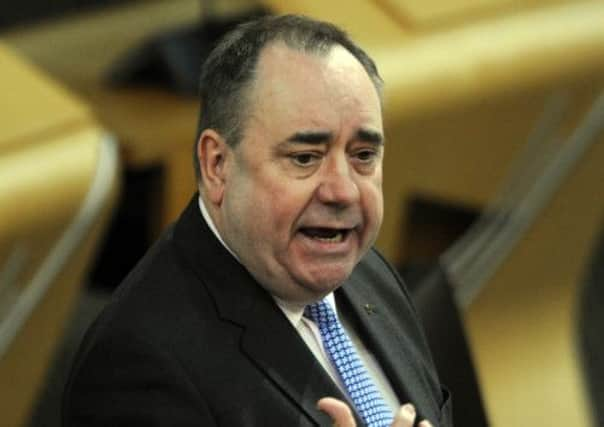Leaders: A middle road to independence | Road safety


His diagnosis that the problem stems from the lack of passion in the yes campaign looks accurate. In today’s Scotsman, Dr Matt Qvortrup of Cranfield University, who is a leading scholar of referenda, agrees and cites many international examples to back the argument.
The claim by Alex Salmond that he will come from behind and turn the tables on his opponents, therefore, looks to have history against it. Of course, Mr Salmond did exactly that in the 2011 Holyrood election, and we should never write off Scotland’s most successful modern politician. But that was an election campaign and not about abandoning three centuries of a national constitution.
Advertisement
Hide AdAdvertisement
Hide AdAt the heart of the yes campaign so far has been a paradox. The SNP have always wanted independence because they believe that without it, the radical changes they reckon Scotland needs to become a more prosperous and fairer society cannot occur, as Scotland is imprisoned within the British state.
But only a minority of Scots believes this. So to win a 50+ per cent vote for independence, the SNP has to reach out and win over the far less committed centre ground which is nonetheless interested in seeing positive change. To convince them, the change that independence represents has to be depicted as less radical and not so threatening.
This has meant retaining the monarchy, membership of Nato, the pound sterling, the Bank of England, and much of the British social and cultural union. This however, to radical nationalists, simply looks like a slightly paler version of the suffocating British state and no leap to freedom at all. From this paradox, there appears to be no escape to victory. If Mr Salmond is radical, he loses the referendum. If he is not so radical, he might win the vote but end up with something that is nowhere near the independence demanded by his supporters.
This, however, is not irreconcilable, if independence is viewed not as an event, in which everything happens at once, but as a process in which degrees of practical independence are attained over a period of years.
That process cannot happen unless one big radical change occurs – the reclaiming of Scottish sovereignty and an end to sending Scottish MPs to Westminster.
When that is achieved, then and only then can things independence supporters want be attained, whether it is the removal of nuclear weapons from Scotland or the re-shaping of the welfare state.
The Yes campaign should not be about one single, hegemonic vision for Scotland, but about creating the environment in which many visions can flourish.
Dual challenge on road safety
Cameras which measure the average speed of cars are to be installed on the A9. This can only be a good thing, but it is not enough.
Advertisement
Hide AdAdvertisement
Hide AdOn other roads, these cameras have been proven to be effective at reducing speeds. Unlike static single location cameras where drivers know that they can accelerate once they are past them, people know that they cannot exceed the prescribed speed limit along the stretch of road covered by average speed cameras.
Some of the fatalities which have occurred on the A9 have indeed been caused by excessive speed, so their installation should curb the death and injury toll. But other accidents have occurred because people try to overtake slow-moving lorries and farm vehicles forgetting that they are not on one of the dualled stretches. More happen where there are junctions without flyovers and drivers have to cross the main traffic flow. Many motorists are also visitors, unfamiliar with the road’s peculiarities.
The A9, now admitted by a senior police officer to be a dangerous road, will still be dangerous once these cameras are installed. The risk of fatal accidents will not be reduced to the level that prevails on other main Scottish roads until it is entirely dual carriageway between Perth and Inverness.
Though the Scottish Government has made that a goal and is making progress it is unacceptable that this will not be achieved until 2025 at the earliest. Building such infrastructure is also at the heart of this Government’s economic recovery programme. It is time that dualling the A9 became not just part of efforts at economic revival, but also part of a programme to make Scotland a much safer place.